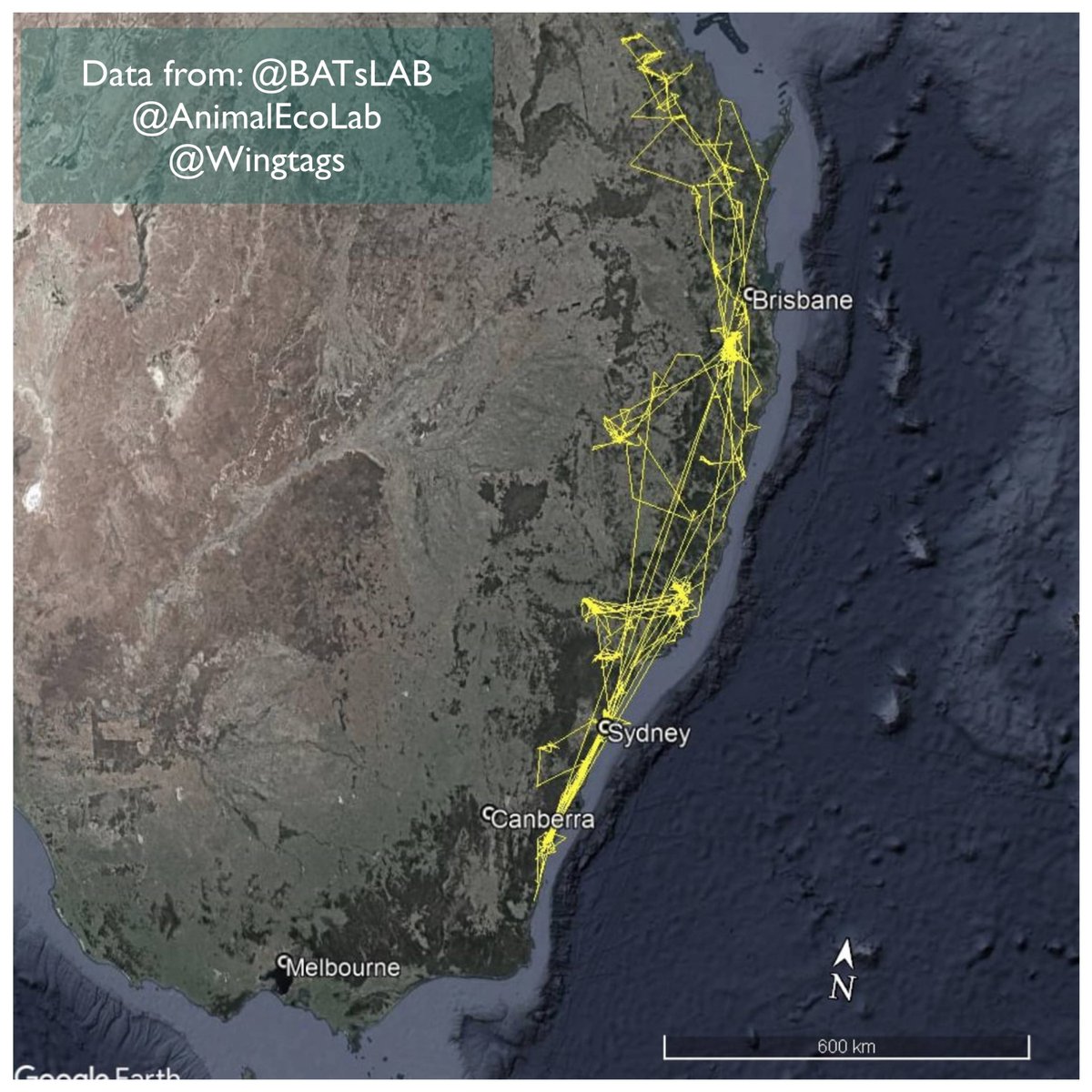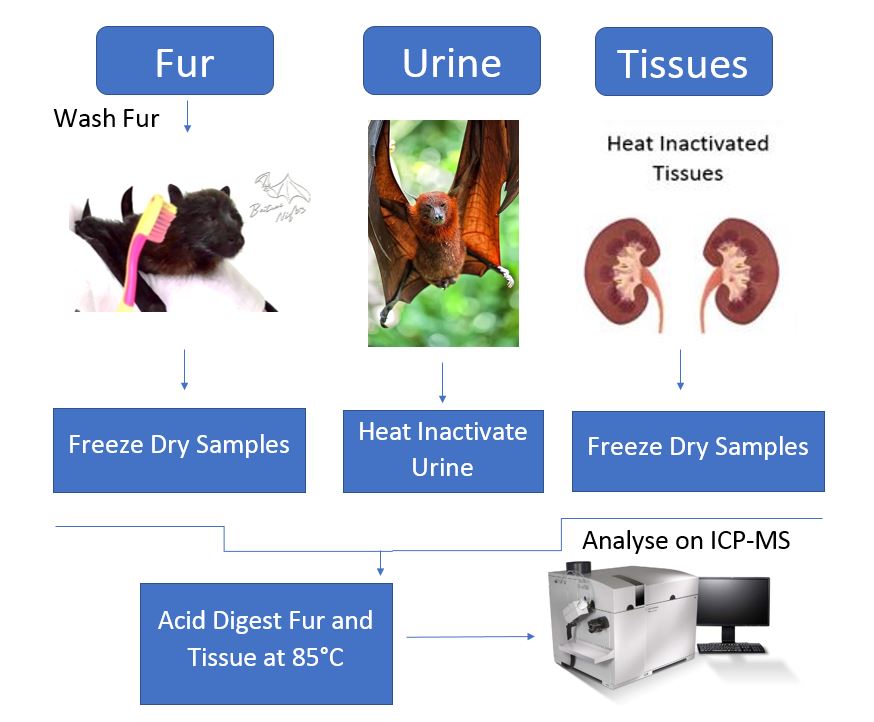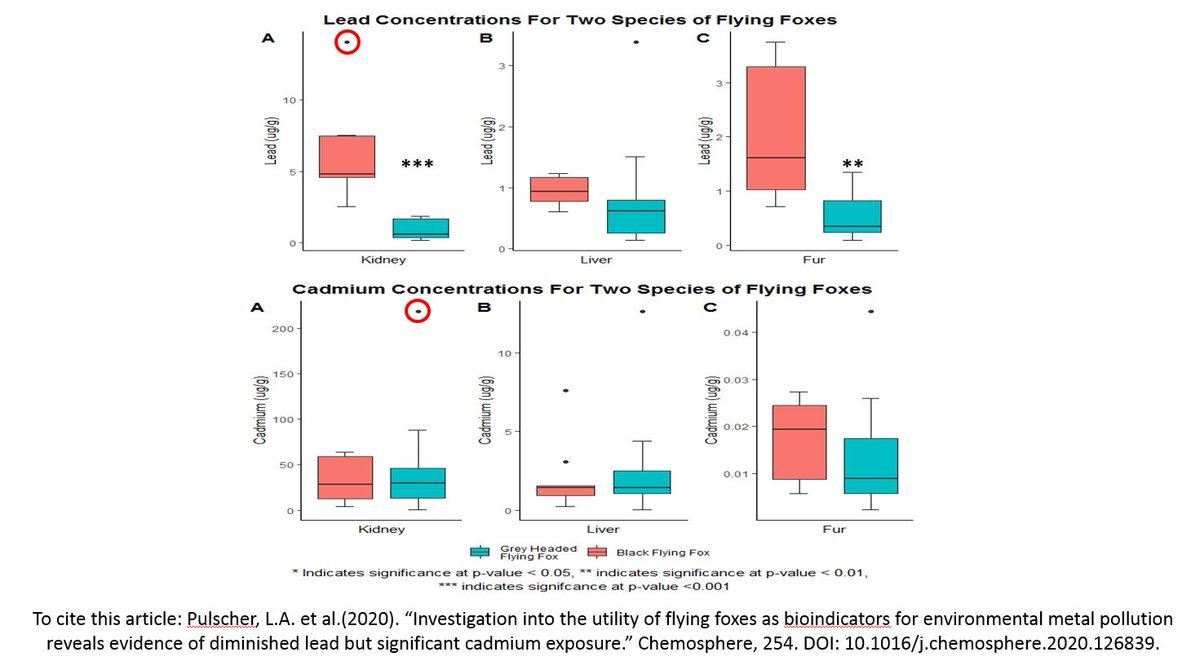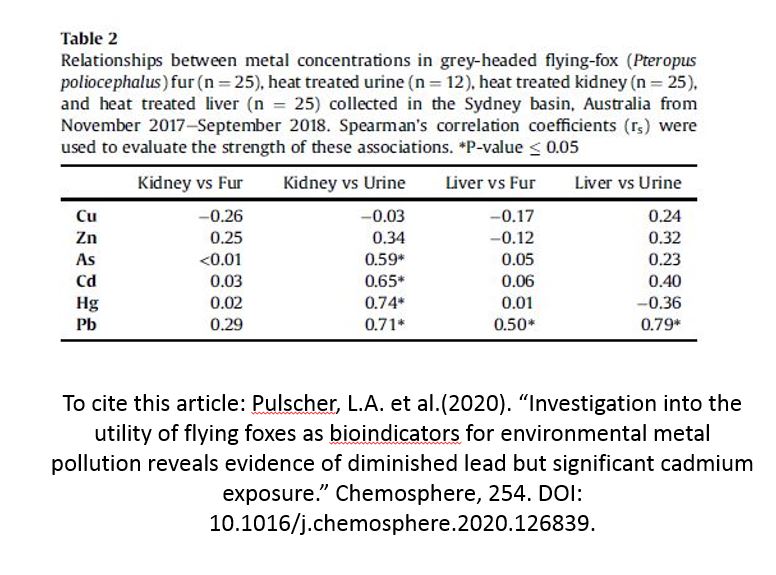1/5 #WBTC1 #Conserve1
Flying-foxes can serve as #bioindicators for assessing metal #toxicants due to their large #homerange
Measuring #pollutants in biological samples from #bats can be used to monitor metals but this is poorly studied in #flyingfoxes
https://www.sciencedirect.com/science/article/pii/S0045653520310328?via%3Dihub">https://www.sciencedirect.com/science/a...
Flying-foxes can serve as #bioindicators for assessing metal #toxicants due to their large #homerange
Measuring #pollutants in biological samples from #bats can be used to monitor metals but this is poorly studied in #flyingfoxes
https://www.sciencedirect.com/science/article/pii/S0045653520310328?via%3Dihub">https://www.sciencedirect.com/science/a...
2/5 #WBTC1 #Conserve1
We collected tissue, fur and urine samples from Grey-Headed (n=25) and Black (n=9) FF in Sydney #Australia in 2013 and 2017-18, and tested them for 17 #metals including #cadmium, lead, mercury, zinc, arsenic, and copper on an ICP-MS
We collected tissue, fur and urine samples from Grey-Headed (n=25) and Black (n=9) FF in Sydney #Australia in 2013 and 2017-18, and tested them for 17 #metals including #cadmium, lead, mercury, zinc, arsenic, and copper on an ICP-MS
3/5 #WBTC1 #Conserve1
Black FF had higher kidney and fur Pb. Compared to grey-headed FF. Pb was lower than previously reported but 1 FF had #toxic kidney Pb concentrations
Cd was higher than what was reported previously and 1 grey-headed FF had toxic kidney Cd concentrations
Black FF had higher kidney and fur Pb. Compared to grey-headed FF. Pb was lower than previously reported but 1 FF had #toxic kidney Pb concentrations
Cd was higher than what was reported previously and 1 grey-headed FF had toxic kidney Cd concentrations
4/5 #WBTC1 #Conserve1
Kidney and urine As, Cd, Pb and Hg concentrations were significantly correlated. Liver and fur Pb and liver and urine Pb concentrations were also significantly correlated.
This suggests that urine and fur can be used to assess metal #contaminates in FF.
Kidney and urine As, Cd, Pb and Hg concentrations were significantly correlated. Liver and fur Pb and liver and urine Pb concentrations were also significantly correlated.
This suggests that urine and fur can be used to assess metal #contaminates in FF.
5/5 #WBTC1 #Conserve1
FF are valuable #bioindicators for metal #pollutants. Pb was diminished in FF suggesting Pb has been reduced in the #environment. Cd was higher in FF and should be further investigated
Next we plan to screen Xmas Island #flyingfox fur and urine for metals
FF are valuable #bioindicators for metal #pollutants. Pb was diminished in FF suggesting Pb has been reduced in the #environment. Cd was higher in FF and should be further investigated
Next we plan to screen Xmas Island #flyingfox fur and urine for metals

 Read on Twitter
Read on Twitter





